#Organic Poultry Farming
Explore tagged Tumblr posts
Text
Organic Poultry Farming Made Simple: A Step-by-Step Guide for Beginners
Introduction
Organic Poultry refers to birds raised according to organic farming principles, emphasizing natural processes and ecological balance. This farming method ensures that the Poultry is free from synthetic chemicals, antibiotics, and genetically modified organisms (GMOs). Organic poultry farming is gaining popularity worldwide because there is an increasing need for more sustainable and healthful food options. Concerns about food safety, environmental sustainability, and animal welfare drive this shift towards organic products.
With its diverse agro-climatic conditions, Nepal is ideal for organic poultry farming. The country’s varied geography, from the lowland Terai to the high-altitude Himalayan regions, allows for cultivating a wide range of organic crops and rearing livestock, including poultry.
Organic poultry farming in Nepal is still in its nascent stage. The majority of poultry farming in Nepal is conventional, relying heavily on synthetic inputs and intensive farming practices. However, there is a growing awareness among farmers and consumers about the benefits of organic farming. Several government and non-governmental organizations initiatives aim to promote organic agriculture, including poultry farming.
Similarly, Steps for organic chicken feeds formulation
How to Start Organic Poultry?
Starting an organic poultry farm involves several steps, from organizing and preparing to carrying out and overseeing. Here is a step-by-step guide to help you get started:
Step 1: Research and Planning
Before starting an organic poultry farm, it is essential to conduct thorough research. Understand the principles of organic farming, your country’s regulations and certification requirements, and the market demand for organic poultry products.
Step 2: Choose the Right Location
Select a location that meets the requirements for organic farming. The site should have access to clean water, good drainage, sufficient space for the Poultry to roam freely, and soil free from contamination by synthetic chemicals.
Step 3: Build Suitable Housing
Organic Poultry requires housing that allows them to exhibit natural behaviors. The housing should be protected from predators and adverse weather conditions. Ensure that the chickens have access to outdoor areas where they can forage.
Step 4: Source Organic chicks

Organic Poultry Farming(Source: Agrifarming)
Step 5: Provide Organic Feed
Feed is a crucial component of organic poultry farming. Provide certified organic feed free from synthetic additives, antibiotics, and GMOs. Additionally, you can forage outdoors and add organic kitchen leftovers to your diet.
Step 6: Implement Good Management Practices
Ensure good hygiene and sanitation practices to prevent diseases. Regularly clean the poultry housing and provide clean water. Monitor the birds’ health and address any issues promptly.
Step 7: Certification
If you plan to market your poultry products as organic, you need to obtain organic certification. This involves complying with the regulations and standards set by the certification body. You should also maintain detailed records of your farming practices and be prepared for inspections.
Step 8: Marketing
Develop a marketing plan to sell your organic poultry products. Identify your target market and establish distribution channels. You can sell directly to consumers, local markets, or restaurants prioritizing organic products.
What Are the Benefits of Organic Poultry?
Organic poultry farming offers several benefits for consumers, farmers, and the environment. Here are some of the key benefits:
Health Benefits: Organic Poultry is devoid of artificial chemicals, hormones, and antibiotics, making it a healthier choice for consumers. Studies have shown that organic Poultry has higher nutritional value and more omega-3 fatty acids and antioxidants than conventional Poultry. Organic poultry farming ensures higher standards of animal welfare. The birds are given access to the outdoors, letting them engage in their natural activities, like perching, dust bathing, and foraging. This results in healthier and happier animals than those raised in intensive farming systems.
Economic Benefits: Organic poultry farming can be economically beneficial for farmers. Although the initial investment and production costs may be higher, organic poultry products can be sold at a premium price, resulting in higher profit margins. Additionally, organic farming practices can reduce dependency on expensive synthetic inputs, leading to long-term cost savings.
Consumer Satisfaction: Consumers are becoming increasingly worried about food safety and quality. Organic Poultry Meets the growing demand for natural, healthy, and sustainably produced products. Farmers can build a loyal customer base by providing high-quality organic Poultry, Enhancing their reputation.
For More Details, Click Here
0 notes
Text
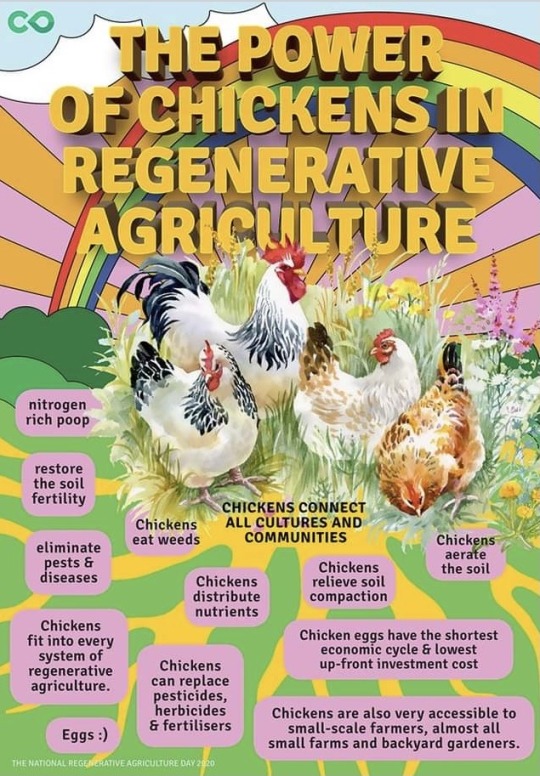
#chicken#chicken posting#relatablepost#ecofriendly#agriculture#food post#birdblr#bird posting#regenerative agriculture#radical ecology#farmcore#organic farming#farm animals#farmland#farmblr#meat and poultry#poultry farming#chickenblr#spreading awareness#animalblr#animal posting#leftism#leftist#left wing#ecology#environmental#environmentalism#environmentallyfriendly#environmental science
7 notes
·
View notes
Text
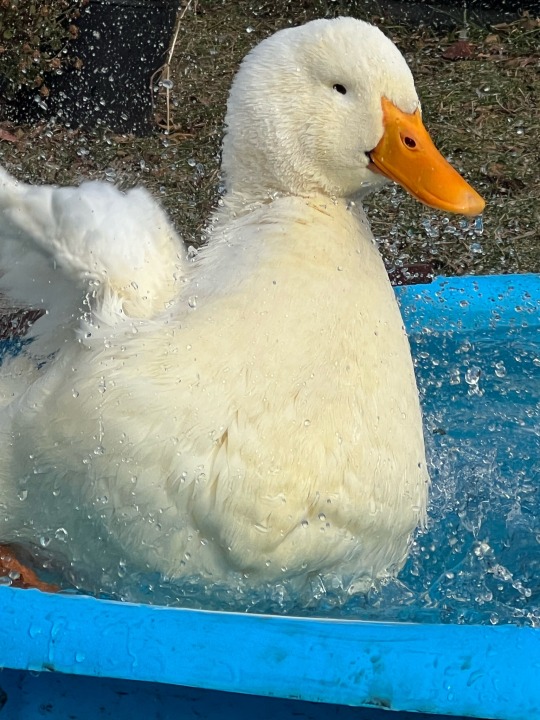
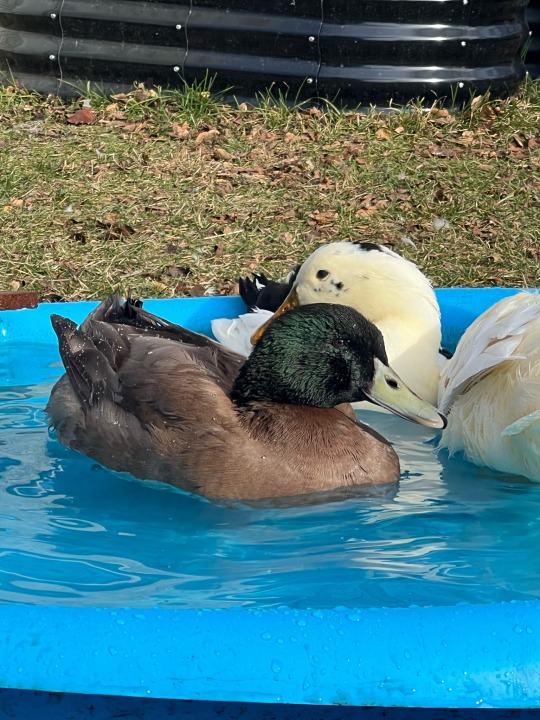
It’s been cold and gross out but the ducks always love a fresh pool of water to bath in.
5 notes
·
View notes
Text
Present Scenario of Poultry in India

The fowl industry in India has witnessed tremendous growth in last few decades. India is now the 3rd largest egg producer and 5th largest broiler meat producer in the world. The per capita consumption of eggs has risen from just 23 eggs in 1990 to 62 eggs in 2019. Similarly, broiler meat consumption has increased from 1 kg per person to 4 kg per person in last 20 years. The growth has been fuelled by multiple factors like rising disposable incomes, urbanization, health awareness and aggressive marketing by fowl players.
Role of contract farming and Integrators Indian Poultry industry is primarily organized through a contract farming model where integrators provide inputs like chicks, feed and veterinary services to farmers while procuring the produce at a pre-determined rate. Major players like Venky's, Godrej Agrovet, CP Group etc. have established strong backward integration through hatcheries and feed mills while maintaining a large outgrower base. This model has led to standardization of operations and assured market access for small farmers. It has played a pivotal role in the overall development of the sector.
Government Support through policies and schemes Successive governments have recognized the growth potential of fowl and implemented several schemes to boost production and investment in the sector. Introduction of National Fowl Development Board and National Poultry Mission are notable initiatives. State governments also provide subsidies on inputs and set up infrastructure development schemes. Focus on rural development and employment generation along with food security has kept fowl high on the policy agenda.
Opportunities in Processed Products and Export With overall production rising, there is large untapped potential in processed value added products like frozen ready-to-cook items, cut parts and deboned meat. Major players are setting up dedicated processing plants to cater to urban consumers looking for convenient dining solutions. Export markets offer huge scope given India's competitive advantage of low cost production. China Plus One policy can boost shipments to non-Chinese markets in future. Strict implementation of quality and safety standards will open more global opportunities.
Challenges on the Environmental and Disease Front Rapid intensification especially in broiler sector in some states poses risks to environmental sustainability due to issues like excessive ground water use, disposal of litter and manure etc. Recurrence of avian diseases like bird flu and Ranikhet also affects profitability and expansion plans periodically. Players will have to focus on biosecurity protocols and integrate sustainable practices to balance growth and environment protection responsibilities. Adoption of preventive vaccines and improved surveillance systems is the need of the hour.
To summarize, Indian Poultry industry has come a long way and is poised for further growth driven by domestic consumption as well as export potential. However, managing environmental fallouts and animal health challenges in evolving scenario will determine its sustainability and scope for the future. Continuous policy support coupled with private sector initiatives can help realize its full potential. Get More Insights On, Poultry About Author: Ravina Pandya, Content Writer, has a strong foothold in the market research industry. She specializes in writing well-researched articles from different industries, including food and beverages, information and technology, healthcare, chemical and materials, etc. (https://www.linkedin.com/in/ravina-pandya-1a3984191)
#Poultry#Chicken#Geese#Poultry Farming#Organic Poultry#Poultry Nutrition#Poultry Processing#Poultry Equipment
0 notes
Text
SRB Poultry Farm prides itself on delivering the finest quality poultry products to our customers. Here's why our poultry stands out from the rest:
1. **Top-Quality Standards**: We adhere to stringent quality standards throughout our poultry farming process. From the selection of breeds to the handling of eggs and the raising of chicks, every step is meticulously managed to ensure the highest quality outcome.
2. **Healthy and Happy Birds**: Our poultry are raised in a stress-free environment with plenty of space to roam and access to clean water and nutritious feed. This results in healthier and happier birds, which in turn translates to better-tasting and more nutritious meat and eggs.
3. **Expertise and Experience**: With years of experience in poultry farming, our team consists of experts who understand the nuances of raising poultry. They employ best practices and innovative techniques to optimize the health and productivity of our birds.
4. **Ethical Farming Practices**: We are committed to ethical and sustainable farming practices. Our poultry farm operates with the utmost respect for animal welfare, environmental sustainability, and community well-being. When you choose our poultry products, you can trust that you're supporting a responsible and conscientious operation.
5. **Freshness Guaranteed**: We prioritize freshness in all our products. Our poultry is processed and delivered promptly to ensure that you receive the freshest meat and eggs possible. From farm to table, we guarantee the highest level of freshness and flavor.
6. **Variety and Selection**: Whether you're looking for whole chickens, chicken parts, or eggs, we offer a wide variety of poultry products to suit your needs. Our diverse selection ensures that you can find exactly what you're looking for, whether you're cooking a family meal or preparing for a special occasion.
7. **Customer Satisfaction**: Above all, we prioritize customer satisfaction. We value your trust in choosing our poultry products, and we're committed to delivering an exceptional experience every time. From our friendly customer service to our reliable delivery, we go above and beyond to ensure that you're completely satisfied with your purchase.
In conclusion, when you choose our poultry, you're choosing the best in quality, taste, and ethical standards. Experience the difference for yourself and make our poultry a staple in your kitchen.
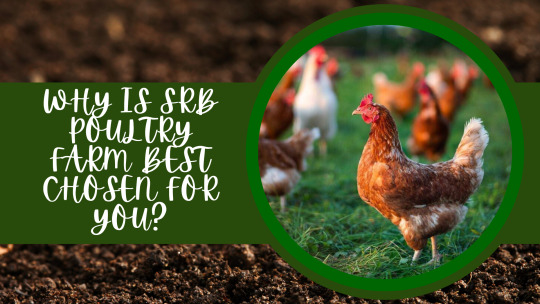
#farming#agriculture farming#bangladeshi organic farming#organic#organic farming#organic farm in bangladesh#farm#organic vegetables#crop#meat and poultry#poultry farming#poultry feed#chicken#backyard poultry#poultry man#Poultry Farm
0 notes
Text
youtube
#youtube#social media#travel#meat and poultry#poultry farming#backyard poultry#poultry man#poultry#chickens#chicken#poultrycage#farmacia#small scale farming#urban farming#organic farming#farming#farmlife#farm#tamilnet#coimbatore#tamilnadu#live stock market#liveblogging#animals#animal#animal life#animal lover#animal liberation#current events#event
0 notes
Text
Why Choose Amish-Raised Chicken? The Health and Nutrition Advantages Explained
Amish chickens are known for their high-quality meat, rich flavor, and nutritious value. In this article, we will explore the health benefits of eating Amish-raised chicken, how they differ from conventionally raised chickens, and why choosing Amish-raised chicken is a wise choice for your family’s health. Introduction to Amish-Raised Chicken The Amish community has been raising chickens for…
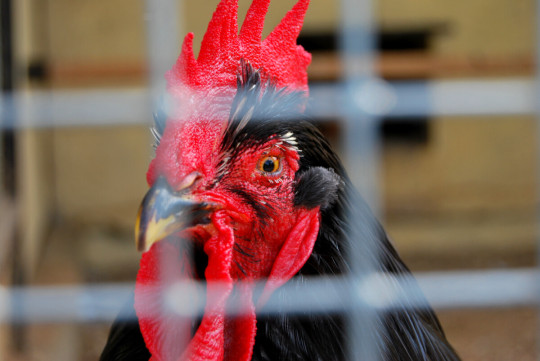
View On WordPress
#free range chickens#health benefits of eating chicken#nutrition advantages#organic farming practices#pasture-raised poultry#Tags: amish chicken coop
0 notes
Text
Went to a poultry and rabbit market today






1 note
·
View note
Link
Organic poultry farming has gained significant popularity in recent years as consumers increasingly prioritize sustainable and environmentally friendly food choices. This article provides an overview of organic poultry farming, including its methods, benefits, and the support available for farmers interested in adopting this holistic approach to chicken rearing.
0 notes
Text

Organic Poultry refers to birds raised according to organic farming principles, emphasizing natural processes and ecological balance. This farming method ensures that the Poultry is free from synthetic chemicals, antibiotics, and genetically modified organisms (GMOs).
0 notes
Text
Buy Fresh Smoked Whole Chicken!
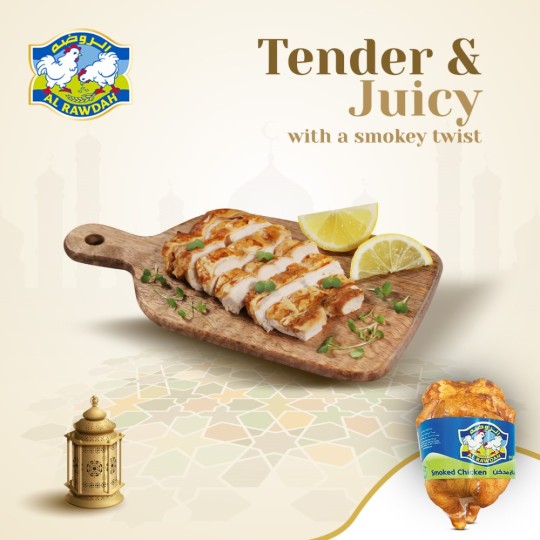
Love the taste of smoky meats but want a healthier option? Our Al Rawdah Fresh Smoked Whole Chicken is the perfect solution! 🍗🔥🌿
✅Order now ✨via WhatsApp📱0504508440 or visit our website
Buy Fresh Chicken
#Fresh Chicken Suppliers#alrawdahchicken#alrawdahdubai#alrawdonline#alrawdahfarms#onlineconfectionary#alrawdconfectionary#confectionary#alrawdahchickencrispyfries#alrawdahchickenfries#alrawdahchickenfriesonline#Fresh Chicken Thighs#Fresh Organic Chicken#Fresh Chicken Breast#Fresh Chicken Products#Poultry Farm in Dubai#Farm Eggs Dubai#Best Frozen Chicken Nuggets in Uae
0 notes
Text
#Best Hog and Poultry Operations Steps#cannabis water systems#agricultural water treatment systems#agricultural water purification#crop water systems#industrial water treatment services#organic farming water purification systems
0 notes
Text
By combining food-bearing trees and shrubs with poultry production, Haslett-Marroquin and his peers are practicing what is known as agroforestry — an ancient practice that intertwines annual and perennial agriculture. Other forms include alley cropping, in which annual crops including grains, legumes, and vegetables grow between rows of food-bearing trees, and silvopasture, which features cattle munching grass between the rows. Agroforestry was largely abandoned in the United States after the nation’s westward expansion in the 19th century. In the 2022 Agricultural Census, just 1.7 percent of U.S. farmers reported integrating trees into crop and livestock operations. But it’s widely practiced across the globe, particularly in Southeast Asia and Central and South America. According to the U.N. Food and Agriculture Organization, 43 percent of all agricultural land globally includes agroforestry features. Bringing trees to the region now known as the Corn Belt, known for its industrial-scale agriculture and largely devoid of perennial crops, might seem like the height of folly. On closer inspection, however, agroforestry systems like Haslett-Marroquin’s might be a crucial strategy for both preserving and revitalizing one of the globe’s most important farming regions. And while the corn-soybean duopoly that holds sway in the U.S. heartland produces mainly feed for livestock and ethanol, agroforestry can deliver a broader variety of nutrient-dense foods, like nuts and fruit, even as it diversifies farmer income away from the volatile global livestock-feed market.
[...]
Trees actually have a much longer and more robust history in the Midwestern landscape than do annual crops. Think of the Midwestern countryside before U.S. settlers arrived, and you might picture lush grasses and flowers swaying in the wind. That vision is largely accurate, but it’s incomplete. Amid the tall-grass prairies and wetlands, oak trees once dotted landscapes from the shores of Lake Michigan through swathes of present-day Indiana, Illinois, Iowa, and Missouri, clear down to the Mexican border. These trees didn’t clump together in dense forests with closed canopies but rather in what ecologists call savannas — patches of grassland interspersed with oaks. Within these oak savannas, which were interlaced with prairies, tree crowns covered between 10 percent and 30 percent of the ground. They were essentially a transition between the tight deciduous forests of the East and the fully open grasslands further west. And in the region where Haslett-Marroquin farms — part of the so-called Driftless Area, which was never glaciated — trees proliferated even more intensely. In pre-settlement times, according to a 2014 analysis coauthored by Iowa State University ecologist Lisa Schulte Moore, closed-canopy forests of oaks, sugar maples, and other species covered 15.3 percent of the area, and woodlands (low-density forests) took up another 8.6 percent. Prairies — the ecosystem we readily imagine — composed just 6.9 percent. Oak savannas made up the rest.
10 September 2024
92 notes
·
View notes
Text
Recipe tutorials
Quick meals
Healthy recipes
Vegan cooking
Vegetarian dishes
Meal planning
Budget meals
Family dinners
Breakfast ideas
Lunch recipes
Dinner options
Snacks
Appetizers
Soups
Salads
Desserts
Baking basics
Bread making
Pasta dishes
Seafood recipes
Meat meals
Poultry recipes
Barbecue tips
Grilling techniques
Slow cooker recipes
Instant Pot meals
Food prep hacks
Cooking tips
Chef secrets
Culinary skills
Knife skills
Food safety
Gluten-free
Keto recipes
Paleo diet
Low-carb options
Dairy-free
Nut-free cooking
Sugar-free desserts
Comfort food
Gourmet dishes
International cuisine
Asian recipes
Italian cooking
Mexican dishes
French cuisine
Indian recipes
Middle Eastern food
Vegan desserts
Vegetarian breakfast
Festive meals
Thanksgiving recipes
Christmas dinner
Easter treats
Halloween snacks
Valentine’s Day dishes
Cooking shows
Food challenges
Kitchen gadgets
Cookware reviews
Ingredient guides
Spices and herbs
Organic ingredients
Farm-to-table
Sustainable eating
Leftovers ideas
Kids' meals
Baby food
Cooking for seniors
Student recipes
Batch cooking
One-pot meals
Charcuterie boards
Cheese pairing
Wine pairing
Cocktail recipes
Smoothies
Juices
Coffee concoctions
Tea recipes
Plant-based nutrition
Superfoods
Anti-inflammatory meals
Probiotic-rich foods
High-protein snacks
Energy-boosting meals
Low-calorie snacks
Heart-healthy diets
Diabetic-friendly meals
Allergy-aware cooking
Culinary trends
Food vlogging
Cooking classes online
Food photography tips
Food festival tours
Culinary competitions
Chef interviews
Seasonal ingredients
Food market tours
Culinary travel adventures
#lifestyle#food#dinner#Dinner ideas#Easy dinner ideas#Dinner recipes#Dinner ideas healthy#Healthy dinner ideas#Quick dinner ideas#Easy dinner recipes for family#Easy dinner ideas for family#Dinner ideas for two#Easy dinner ideas healthy#Dinner ideas for tonight#Easy dinner ideas for two#Dinner ideas for two easy#Dinner ideas vegetarian#Quick and easy meals#Dinner ideas easy#Quick dinner ideas for 2#Easy weeknight dinners for family#Dinner ideas for two healthy#Dinner menu#Recipe tutorials#Quick meals#Healthy recipes#Vegan cooking#Vegetarian dishes#Meal planning#Budget meals
94 notes
·
View notes
Note
i've been reading some of your arguments for why you wouldn't be vegan and just wanted to point out that you have a lot of fallacy in your arguments. might want to do a look in there to make sure you are stating your morals/prose properly, and aren't using any arguments that can be easy to shutdown. appeal to tradition. appeal to futility and the argument that personal pleasure(taste etc) allows us to do what we want to others without consent to their bodies is a moral issue i don't think you align with but i could be mistaken. a lot of people who enjoy sex don't rape for example.
i also liked the taste of animal flesh and organs but realized my personal pleasure i got from consuming them pales when it is placed against the value of someone's life and what they have to endure for me to get that on my plate, it's easy to have a disconnect when you don't know. health, animals, earth all benefit from a plant based diet. a plant based diet can feed more people for cheaper, helping to end hunger.
you can say you cook "more vegetarian" but i implore you to continue your growth and align your actions with your morals and continue to strive for a plant based diet in the future. you don't seem like a cruel person but i could be wrong. i've been vegan for 15 years and i cook so many amazing meals and can tell you from experience you don't have to limit yourself to oatmeal. if you have time to watch/listen id implore you to check out gary yourofsky "the most important speech you will ever hear"
good luck to you on aligning your moral values with the actions you take daily/what you pay for.
Okay. Do you say these same things to vegans that wear cotton? That also kills a lot of animals. Like a lot of them. It hurts entire ecosystems.
There’s no way to buy stuff in our current economy that doesn’t hurt somebody or something. I know how to cook tasty and cheap and mostly healthy meals for myself and the easiest way to do that is with pre-cut veggies, eggs, and the occasional poultry.
Yeah I’m wasting plastic. Yeah I’m eating animals. Vegans eat almonds and quinoa. Those are bad farmed at an industrial scale.
Being an omnivore is natural and I don’t feel bad about it. If you look me in the eyes and ask me if I could kill a chicken the answer is yes. I’ve done extensive research on how to do it safely, actually. If the apocalypse comes I’m raising hens for meat.
Also comparing animal agriculture to rape? Couldn’t find literally anything else to compare it to? Really?
179 notes
·
View notes
Text
It’s important to understand that this panzootic “is a man-made problem,” says Vincent Munster, who heads the Virus Ecology Section at the U.S. National Institute of Allergy and Infectious Diseases.
Avian flu is not uncommon in wild birds, particularly in its natural hosts: ducks, geese, gulls, terns, swans and other waterfowl. They carry a low pathogenic form, a mild virus that may be asymptomatic. It spreads seasonally, when multiple species congregate at migration stopover sites or cluster together to nest.
But when avian flu spills over into poultry, it can morph into a highly contagious, fatal virus.
The current panzootic began when this H5N1 strain jumped from domestic poultry back into wild birds — which happened because of modern livestock production methods. Humans further facilitated spillover by destroying wetlands, which crowds migrating birds into small scraps of habitat, often with poultry farms nearby.
When farms encroach wetlands, it creates the perfect interface for this type of virus, Walzer says. It’s a veritable petri dish of opportunity for avian flu to swap genes and mutate into potentially more virulent or transmissible strains. This environment allowed the virus to infect chickens, geese and ducks –– and jump back into the wild in a virulent form.
“The emergence of Highly Pathogenic Avian Influenza is a direct result of commercial, large-scale poultry farming,” Munster says. There are more than 34 billion chickens on Earth, according to Food and Agriculture Organization estimates.
#vegan#bird flu#avian flu#global health#pandemics#thanks to @stupidsexyflanders for sharing this with me
53 notes
·
View notes